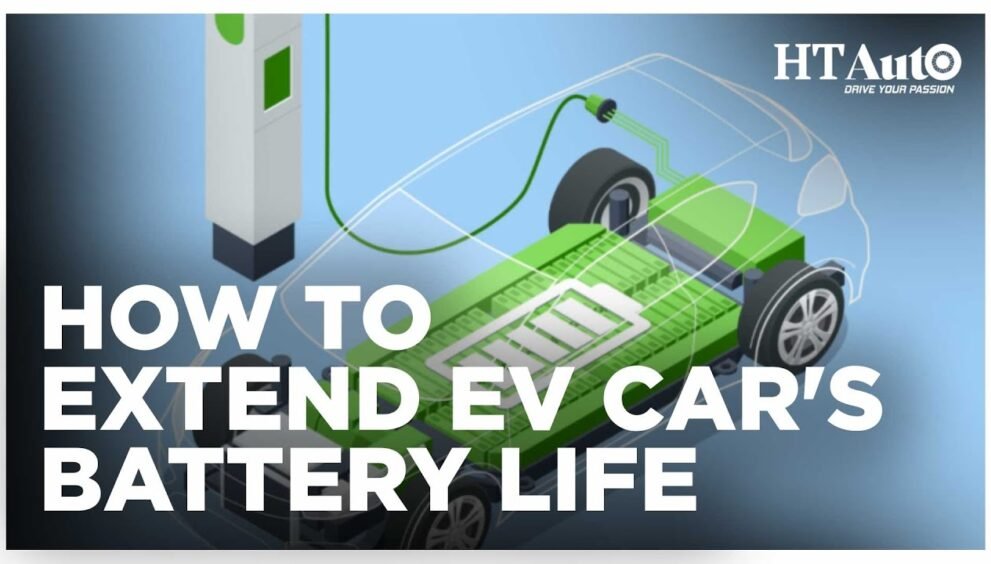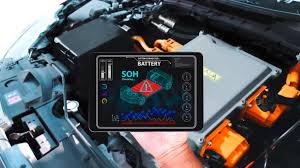How to Extend Your EV Battery Life: 10 Pro Tips

How to Extend Your EV Battery Life: 10 Pro Tips
Electric vehicle batteries represent the most expensive component of your EV, often costing $5,000-$15,000 to replace. Understanding how to prolong battery health through proper electric car maintenance can save you thousands of dollars and ensure your vehicle maintains peak performance for years to come. These ten expert strategies will help you maximize your EV battery life while maintaining optimal driving range.

1. Master the 20-80% Charging Rule
The foundation of excellent EV battery life begins with understanding optimal charging habits. Lithium-ion batteries, which power virtually all modern electric vehicles, experience less stress when maintained between 20% and 80% charge levels. This sweet spot minimizes chemical degradation while providing adequate daily driving range.
Charging to 100% occasionally won’t damage your battery, but making it a daily habit accelerates capacity loss over time. Most EVs allow you to set charging limits through their infotainment systems or smartphone apps, making it easy to stop charging at 80% automatically.
The 20% minimum threshold prevents deep discharge stress, which can cause permanent capacity reduction. Modern EVs include battery management systems that prevent complete discharge, but consistently running your battery below 20% forces the cells to work harder during charging cycles.
2. Avoid Frequent 100% Charging
While convenient, frequent 100% charging represents one of the most damaging habits for long-term battery health. When lithium-ion cells reach full capacity, they experience increased internal pressure and heat generation, both of which accelerate degradation.
Reserve 100% charging for long trips when you need maximum range. For daily commuting, charging to 80% provides sufficient range while significantly extending battery lifespan. Most EV owners find that 80% charge easily covers their daily driving needs with plenty of reserve capacity.
The chemical processes within lithium-ion batteries become more aggressive at higher charge states. Keeping your battery consistently at 100% charge, especially in hot weather, can reduce total capacity by 10-20% faster than following the 20-80% rule.

3. Use Fast Charging Strategically
Fast charging technology enables convenient long-distance travel, but frequent use can impact battery longevity. High-speed charging generates more heat and stress than standard Level 2 charging, potentially accelerating battery degradation if overused.
Reserve DC fast charging for road trips and emergency situations rather than daily use. When possible, use Level 2 charging at home or work, which provides gentler charging that preserves battery chemistry. The slower charging process generates less heat and allows battery cells to maintain better chemical balance.
Modern EVs include sophisticated thermal management systems that protect batteries during fast charging, but physics still limits how much stress batteries can handle. Most manufacturers recommend limiting fast charging to 10-20% of your total charging sessions for optimal battery longevity.
4. Optimize Charging Timing
Charging timing significantly impacts battery health, particularly regarding temperature management. Charging immediately after driving, when batteries are warm, can cause excessive heat buildup. Allow your EV to cool for 30-60 minutes after arrival before initiating charging.
Set charging schedules to complete during cooler nighttime hours when ambient temperatures are lower. Most EVs offer programmable charging that can start automatically during off-peak hours, benefiting both battery health and electricity costs.
Pre-conditioning your battery through your EV’s app while still plugged in helps optimize battery temperature before driving. This feature uses grid power instead of battery power for heating or cooling, preserving range while maintaining ideal operating temperatures.
5. Manage Summer Heat Exposure
Extreme heat represents the greatest threat to EV battery life. High temperatures accelerate chemical reactions within battery cells, causing faster capacity degradation and reduced overall lifespan. Park in shaded areas or garages whenever possible to minimize heat exposure.
Use cabin pre-conditioning while plugged in to cool your vehicle before driving. This strategy reduces the initial battery load and prevents excessive heat buildup during the first minutes of driving. Tinted windows and sunshades can also help reduce interior temperatures.
Monitor your battery temperature through your vehicle’s display or app. If temperatures exceed normal ranges, avoid charging until the battery cools naturally. Some EVs automatically delay charging when battery temperatures are too high, protecting long-term battery health.

6. Protect Against Winter Cold
Cold weather reduces battery efficiency and can impact long-term health if not managed properly. Lithium-ion batteries lose capacity in cold temperatures, but this effect is typically reversible once temperatures warm up.
Pre-heat your cabin while plugged in to reduce battery drain during cold weather driving. Use heated seats and steering wheels instead of cabin heating when possible, as these features consume less energy. Park indoors when temperatures drop below freezing to maintain battery warmth.
Allow your battery to warm up gradually before charging in extremely cold conditions. Most modern EVs include battery heating systems that automatically prepare the battery for charging, but extremely cold batteries may require longer warming periods.
7. Keep Software Updated
Regular software updates often include battery management improvements that enhance longevity and performance. Manufacturers continuously refine charging algorithms, thermal management systems, and battery monitoring through over-the-air updates.
Enable automatic updates when available, or check for updates monthly to ensure your EV has the latest battery optimization features. Some updates include new charging profiles that can extend battery life or improve charging efficiency.
Software updates may also include improvements to battery calibration, which helps maintain accurate range estimates and prevents overcharging or deep discharge scenarios that could damage battery cells.
8. Perform Regular Maintenance Checks
While EVs require less maintenance than gasoline vehicles, battery system maintenance remains crucial for longevity. Schedule annual battery health checks with qualified technicians who can assess capacity, internal resistance, and overall battery condition.
Monitor your battery’s performance through your vehicle’s built-in diagnostics. Watch for unusual capacity loss, charging irregularities, or temperature warnings that might indicate developing problems. Early detection of battery issues can prevent more serious damage.
Keep battery cooling systems clean and functional. Clogged air filters or damaged cooling fans can cause overheating, which accelerates battery degradation. Regular inspection of cooling system components ensures optimal thermal management.

9. Optimize Long-Term Storage
If you need to store your EV for extended periods, maintain the battery at approximately 50% charge. This level minimizes chemical stress while preventing deep discharge during storage. Check and adjust charge levels monthly during long-term storage.
Store your vehicle in climate-controlled environments when possible. Extreme temperatures during storage can cause permanent battery damage, particularly if the battery charge level is too high or too low.
Avoid storing your EV with a completely full or empty battery. Full batteries under storage stress can experience capacity loss, while empty batteries risk deep discharge damage that may render them unusable.
10. Drive Efficiently
Your driving habits directly impact battery longevity. Smooth acceleration and gradual braking reduce battery stress compared to aggressive driving patterns. Regenerative braking systems can actually help maintain battery health by providing gentle charging during deceleration.
Maintain steady speeds when possible, as frequent acceleration and deceleration cycles stress battery cells. Use cruise control on highways to maintain consistent power draw and reduce battery cycling.
Plan routes that minimize extreme temperatures and traffic conditions. Stop-and-go traffic in hot weather represents one of the most stressful conditions for EV batteries, combining heat generation with frequent charging and discharging cycles.
The Long-Term Investment
Following these ten strategies can extend your EV battery life by 20-30% compared to






















































































































































































































































































































